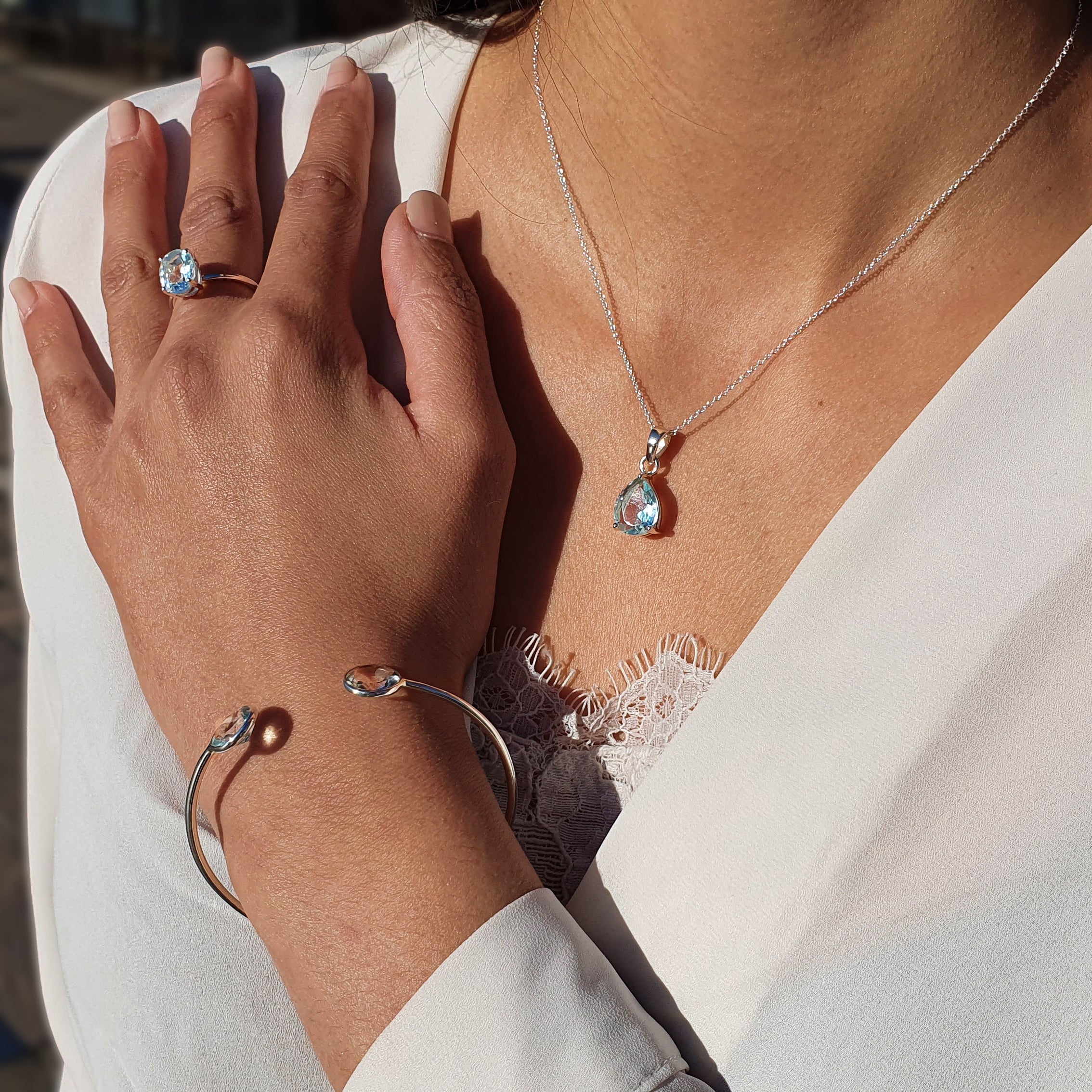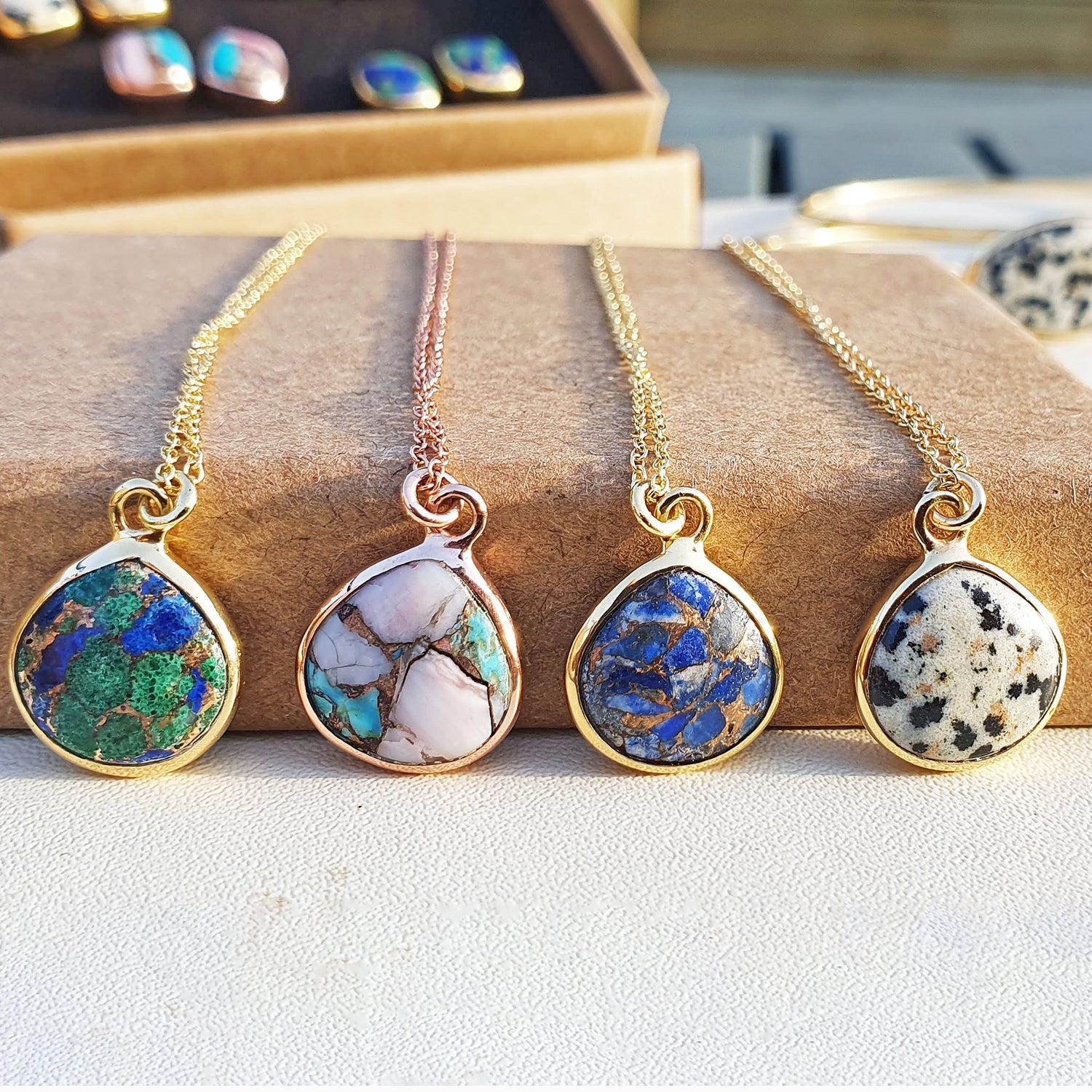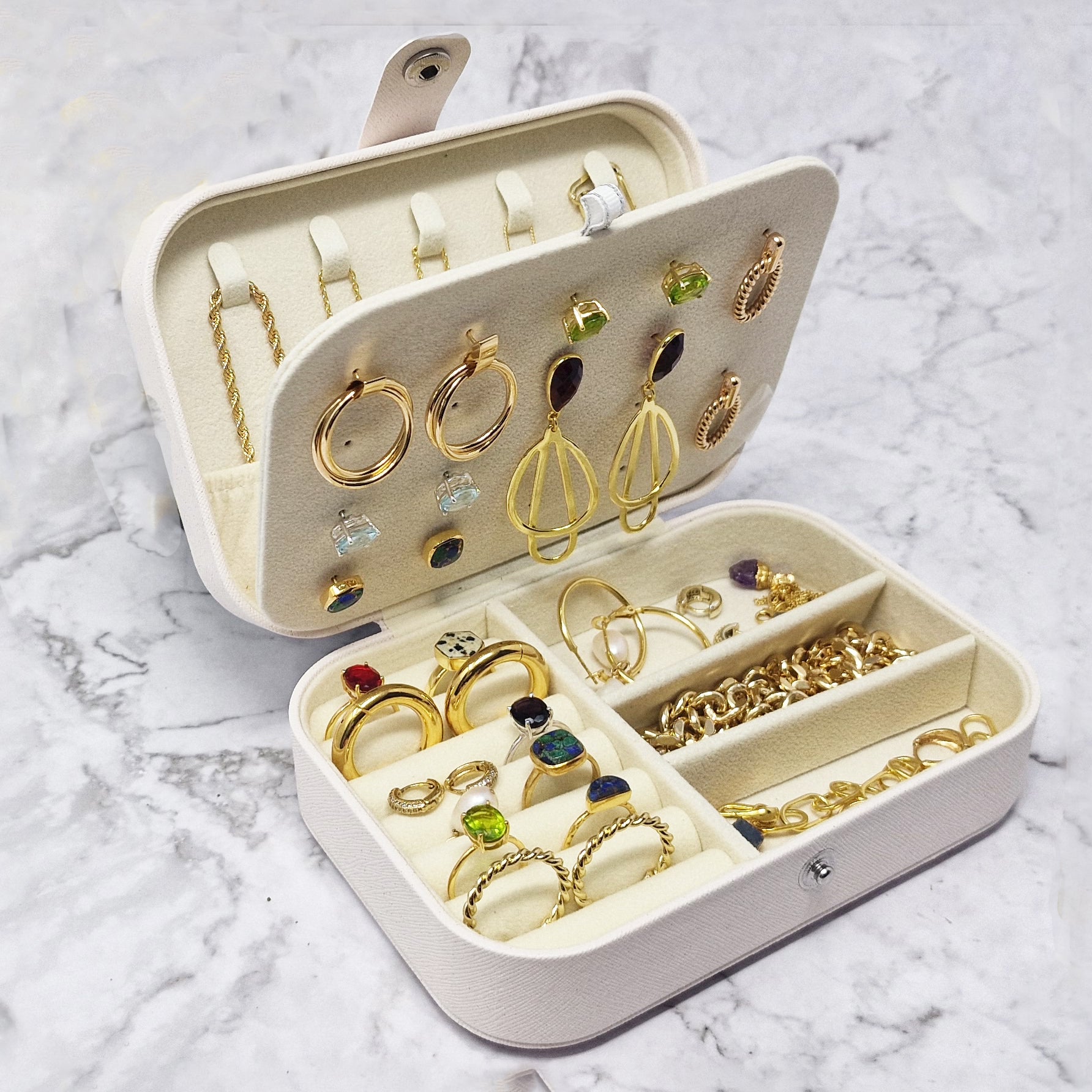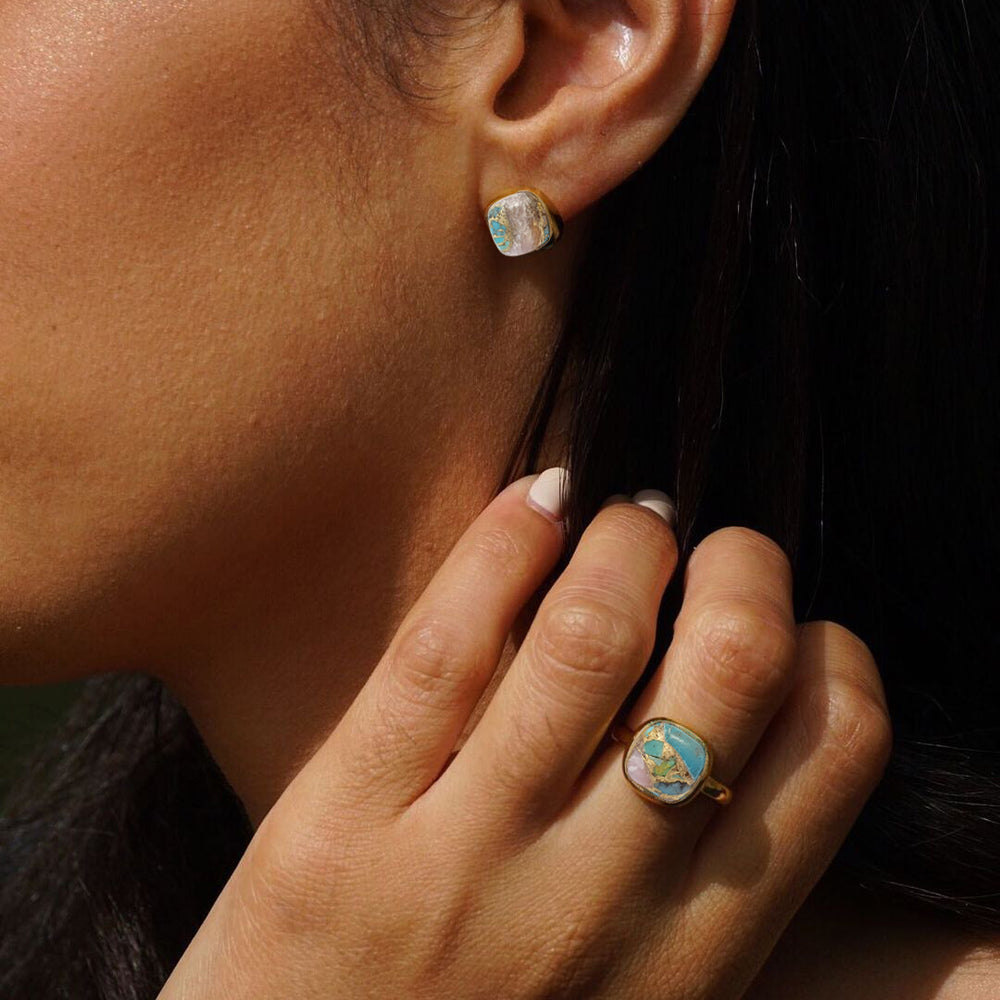August's Glowing Gemstone: A Guide to Peridot Birthstone Jewellery
Peridot (pronounced pear-ee-doe) is a perfect gemstone if you are buying for a Leo (August 1st-22nd) or a Virgo (August 23rd-31st). It is one of the rare gems that only comes in one colour: a luminescent green. Peridot is often referred to as the ‘evening emerald’ because it shines at night and under any lighting. Unlike emeralds, they are lighter in colour. The vibrant green makes it a perfect choice for a summer month like August.
The Meaning and History of Peridot
Peridot derives from the Arabic ‘faridat’ which means gem, and is rooted in the Greek word for giving plenty, ‘peridona’. This birthstone has a long, rich history dating back to 1500bc.
These gems were first found on the Egyptian island Topazo Island, also known as St. John’s Island or Zabargad in Arabic, in the red sea. Slaves were forced to find the stones for Pharaohs. Islanders searched for the gemstone at night because the olive glow radiating from it made it easier to spot. Hence, the nickname ‘the gem of the sun’. They also believed peridot were rays of sunlight fallen from the sky. The island was closely guarded by the Ancient Egyptians as they thought it was the site of priceless treasures. Cleopatras famous collection of emeralds is now thought to be peridot, not emeralds. Today, peridot is still the national gem of Egypt.
It was believed the stone was at its most powerful when put with gold. It would become a talisman for protection from nightmares and used to promote love, happiness and wealth.
It was also important in other ancient cultures. In Ancient Hawaii, peridot stones were treated as the tears of the volcano goddess Pele. Ancient Greeks and Romans also used these stones in their jewellery as they believed it bestowed nobility. Those who could afford it took liquid medicines in cups made of peridot because of its healing capabilities. They thought it would increase the medicinal effects.
In the middle ages, crusaders brought peridot to England. They reserved it to decorate only sacred places, like churches and cathedrals and used it in fine clothing for the nobility. The stone has always been popular with royalty. King Edward VII’s favourite gem was peridot and most vintage peridot jewellery is from the Edwardian and Victorian eras. It was often important in Pre-Raphaelite art and the Art Nouveau movement.
Where does peridot come from?
Peridot is the only gem, other than diamonds, made within the mantle of the earth. It can only be formed at these high temperatures from anywhere between 20 to 50 miles down. Peridot is brought to the surface by volcanic eruptions and tectonic plate activity. Peridot are mined in the Canary Islands, Brazil, Norway, Australia, Brazil, and South Africa. The largest gems are often found along the border between Pakistan and Afghanistan. Today, most peridot comes from the from the San Carlos Apache Indian Reservation in Arizona. However, they can also be found in meteorites. As they have high enough temperatures and have pallasite, which is a combination of iron and olivine. But it is hard to make jewellery from these gems because they are mostly too small.
The Properties of Peridot
Peridot is a variety of olivine which is made of fayalite and forsterite. The colour is dependant on the amount of iron present: more iron equals a deeper green. This makes peridot unique as most gemstones get their colour from impurities and outer elements. Peridot is a semi-precious stone and measures between 6.5 and 7 Mohs, a scale for identifying minerals and gems. This makes it a suitable stone for everyday wear.
Peridot – the August birthstone
The precise rare colour of the peridot makes it a great choice for a one of a kind gift. Peridot is one of the birthstones associated with August, along with spinel and sardonyx. Depending on the elements in the stone, it can appear as a yellow-green. This is thought to symbolise the change from summer to autumn. The bright green colour is associated with nature, peacefulness and good health. Green is also associated with abundance and growth.
Mystical Properties of Peridot
Peridot is thought to bring prosperity and good fortune. It is said to ward off evil spirits and promotes restful sleep. The vivid green is associated with vitality and the heart charkra, so can help to heal and clear out envious thoughts. Legend has it that peridot is the stone of compassion and it calms anger by renewing things. Peridot is associated with light energy. This allows the wearer to end bad energy and boost their mood.
Interesting facts about peridot
- The largest peridot gem ever found was 319 carats
- In the 1700s, a meteorite landed in Siberia which contained many peridot crystals that were large enough to be used for jewellery.
- The stone has been spotted on Mars, so it is the only gemstone known to form on another planet.
- In 2006, NASA’s explorer spacecraft, Stardust, found mineral samples gathered from near the sun, where they found gem-quality peridot. So, Egyptians were right to call it the ‘gem of the sun’.
- In Cologne, Germany, in the Cathedral of Saint Peter and Mary, a famous piece of art inside shows The Shrine of the Three Kings with rare 200-carat peridots.
Caring for your Peridot
Although it is above medium hardness, it is still susceptible to damage from scratches and bumps. Likewise, extreme heat or cold should also be avoided. So, be wary of ultrasonic jewellery cleaners and sudden changes of temperature. To clean a peridot, you should not wipe it dry, as this will dull its radiant green colour. Soap and water are best to wipe off dirt, ensuring the stone is clean before wiping it is key. For storage, they should be kept away from softer jewels to prevent scratching them.
Where to buy peridot jewellery?
Peridot is the perfect gift for your loved one celebrating an August birthday. The gold-green colour means it sparkles but is not overwhelming. So, it can liven up casual looks and still be appropriate for dressier occasions. For a subtle look, try our olive glow earring studs. To add a dash of colour to your outfit, try a peridot pendant to draw the eye.













Leave a comment